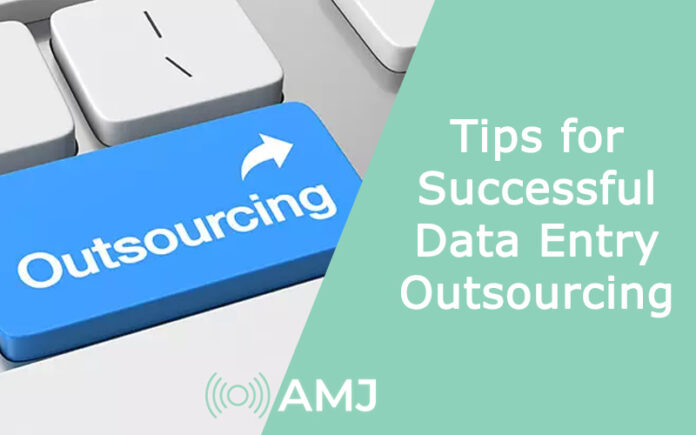Data entry outsourcing is a popular and effective way to manage your firm’s data entry needs. If you’re considering turning to an outsourcing partner for help, then it’s important that you know how to make sure their services will be a good fit for your firm. In this article, we’ll look at three key areas of data entry outsourcing that can help ensure the best results:
- Choosing an outsourcer
- Defining your needs and expectations with them beforehand
- Setting up standards for quality control during the process
Contents
Considerations Before Outsourcing
Before you begin the process of outsourcing, there are certain considerations that need to be made. It’s important to avoid mistakes and find a provider who can meet your needs.
Before outsourcing:
- Consider the resources available in-house and how they might affect your business’s ability to outsource efficiently. Are there employees who have been trained in data entry? Do you have software already installed on your computers that allows for efficient data entry? If not, then it may be more beneficial to hire in house rather than outsource if you’re trying to save money or time. Outsourcing can take some getting used to and require additional training, but if you already have employees with the necessary skillset, then this might not be as big of an issue for you as it would be otherwise!
- Understand what kind of work will need done before making any decisions about who should do it (i.e., do I want my employee(s) focused on other tasks or myself taking care of this project?) In addition
How To Find a Service Provider
Here are some tips for finding and working with a good data entry service provider:
- Check the company’s website. The first thing you should do when searching for a data entry service provider is check out their website. Look through the services they offer, and see if they can handle what you need. You may also want to see if they have references from previous clients that you could contact.
- Ask for references and references of former clients who would be willing to speak with you about their experiences working with this provider. Ask if anyone knows anyone else who has used this particular company before – oftentimes, word-of-mouth referrals are some of the best ways to find good service providers!
Understand Your Provider’s Capabilities
Before you begin outsourcing your data entry services, it is important to understand the capabilities and limitations of your service provider. This will help ensure a successful outsourcing relationship. Your provider should have:
- Experience in data entry. It is important that your service provider has experience with writing content such as articles, blogs and other content or that they have worked with clients who do this type of work regularly. You want to avoid hiring an outsourcer without previous experience because it may lead them to make simple mistakes or misunderstandings during the project resulting in lower quality work than expected. So, it is better to consider hiring experienced data entry outsourcing providers.
- Technology tools for processing large volumes at high speeds without errors; a good example would be using speech recognition software such as Dragon NaturallySpeaking instead of typing everything manually which can reduce error rates dramatically while increasing productivity exponentially when compared with traditional methods like pen-and-paper documents while also reducing costs associated with labor costs associated with typing these kinds of documents manually.
Costs and Budgets
Data entry outsourcing is not just a cost-effective solution, but it also saves time and improves the quality of your data. Data entry outsourcing also helps you manage costs as well as provides a better return on investment (ROI). So when it comes to considering if you should outsource your data entry needs or not, here are some tips for successful data entry outsourcing that you can consider:
- Have a budget for the project
You should have an idea about how much money you want to spend on this project before getting started with it. This way, it will be easier for you to set up realistic goals while working on this project and ensure that everything goes according to plan. Having said that, keep in mind that costs may vary depending on several factors such as the quantity of work needed and turnaround time required by experts who will be doing this job for us
Create Specific Guidelines
The next step is to create a set of guidelines that will help you communicate your expectations and define the project. You may want to create specific instructions outlining how you want the provider’s team to handle each stage in the process, including formatting, data entry, research, and other tasks. This can be done through checklists for each task with examples of how you’d like them completed. Consider providing training materials or sample files so that the provider has everything they need from the start of the project (rather than having to ask questions later).
Testing and Data Security
- Test your data before you send it. This is a simple step that can save you the time and money of having to correct mistakes once the work has been completed. Ask for a sample of what you are expecting, ideally from three or four different workers, then check it for accuracy and completeness. Make sure that all questions have been answered and all fields are filled in correctly before moving forward with any further steps in the process.
- Check your finished data after receiving it back from outsourcing vendors only after they have tested their own results as well to ensure that everything matches up properly (i.e., if they say they’re sending back 100 phone numbers but there are actually only 99 on file). The last thing you want is someone else’s mistake winding up in your records!
Outsource Data Entry Without Taking Shortcuts
When you outsource data entry, do it as part of your business, without taking shortcuts.
If you’re making the decision to outsource because of cost or time constraints, then you might be considering doing so on a short-term basis. This is a mistake. While outsourcing may save money in the short term, the costs could quickly outweigh any perceived benefits if quality suffers due to lack of oversight and proper management techniques.
Data entry outsourcing should be viewed as an opportunity for growth—not simply an expense reduction tactic.
Conclusion
In conclusion, data entry outsourcing is a great way to save time and money while increasing productivity. By outsourcing data entry, you can reduce costs while also increasing your ability to focus on core business functions.












![Index of Money Heist [Season 1, 2, 3 & 4 – All Episodes, Cast and Plot] Index of Money Heist](https://www.asiamediajournal.com/wp-content/uploads/2021/05/Index-of-Money-Heist-3-100x70.jpg)